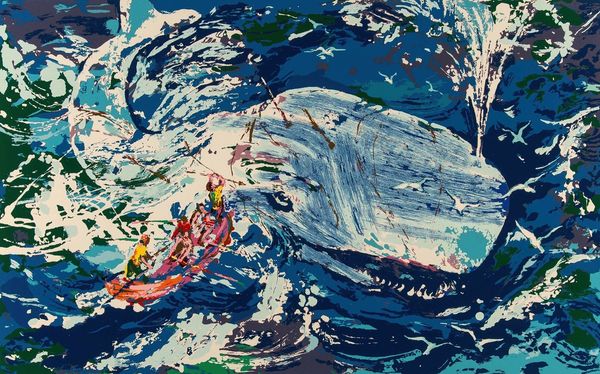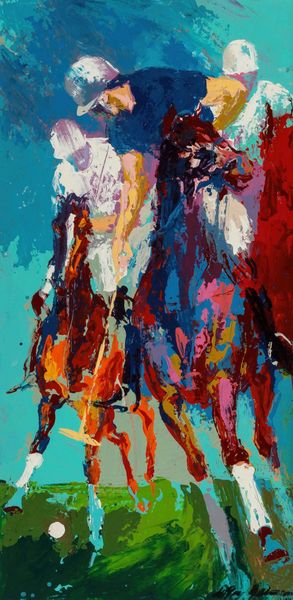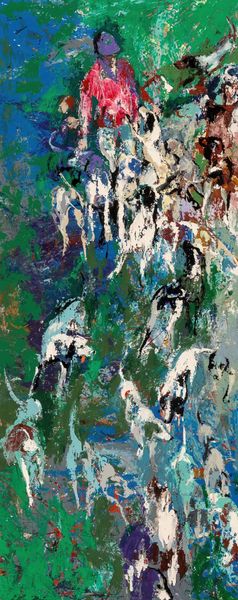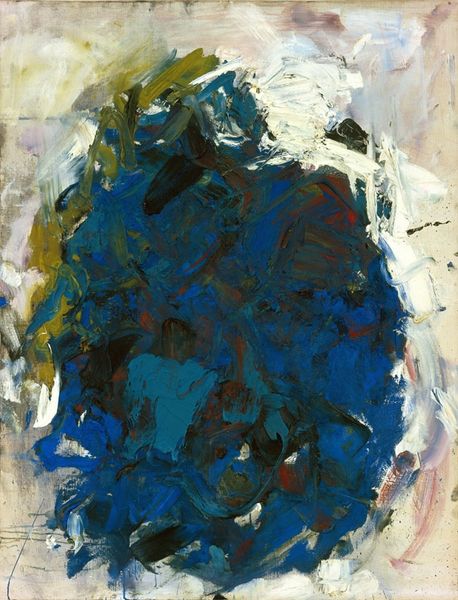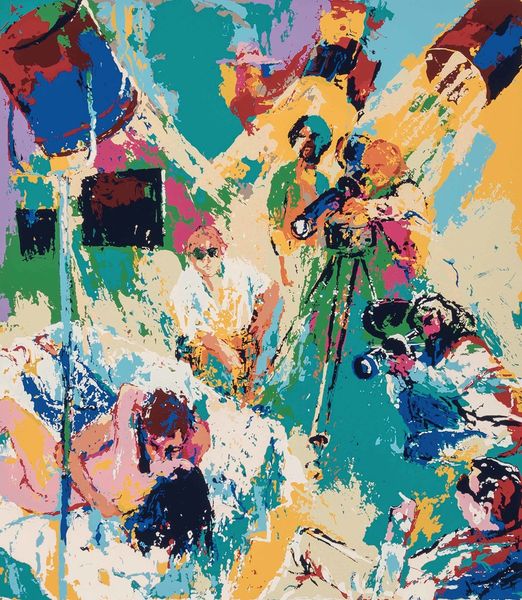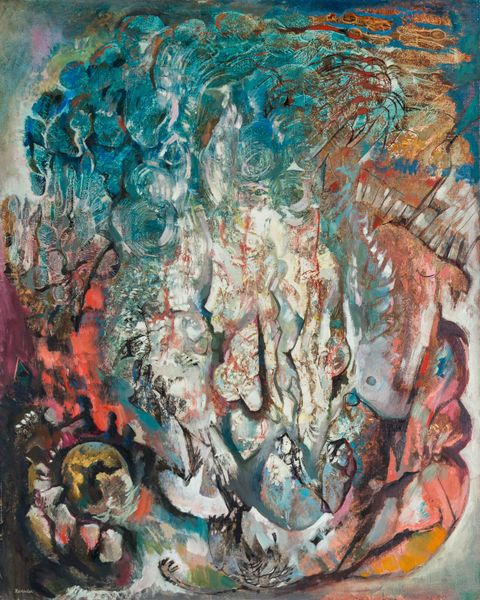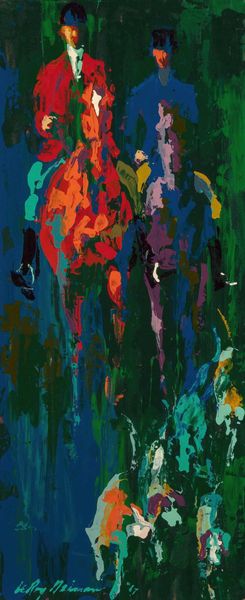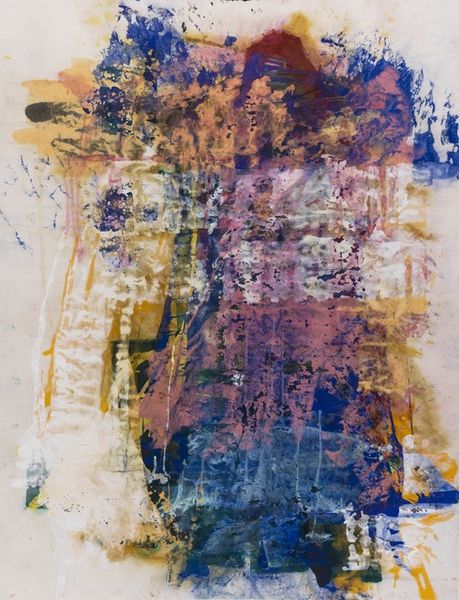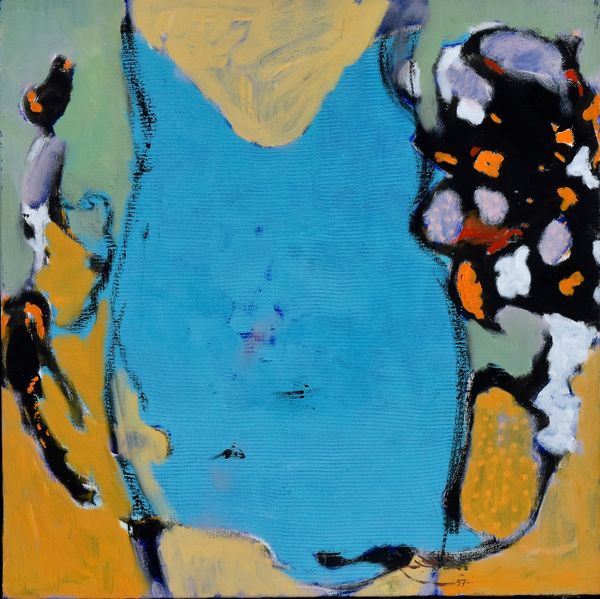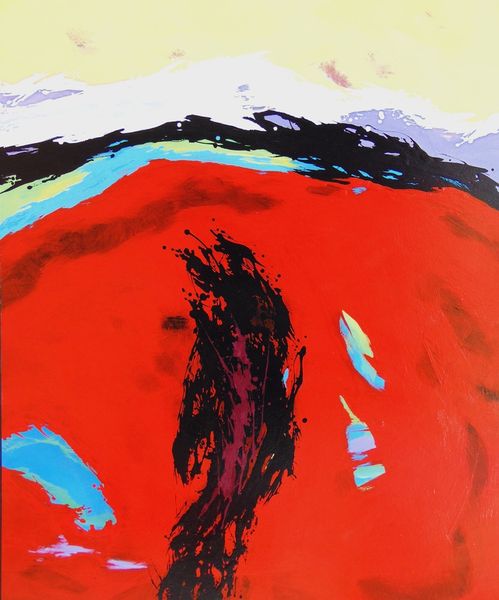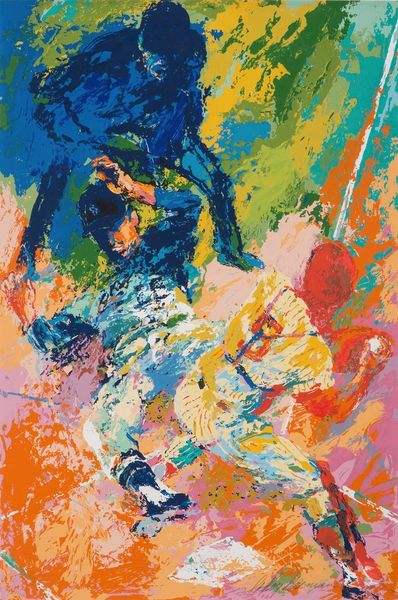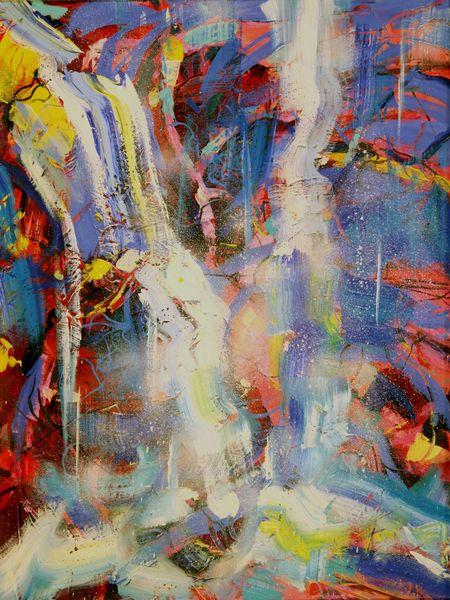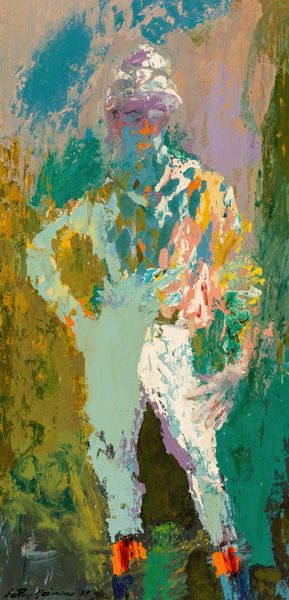
Copyright: Modern Artists: Artvee
Curator: Immediately striking! Such dynamic energy conveyed through these gestural strokes. What's your first impression? Editor: My initial thought is one of urgency. It feels emblematic of the environmental crisis imperiling polar bears today. The swirling blues and whites evoke a precarious, melting landscape. Curator: That's a powerful reading. This is LeRoy Neiman's "Polar Bears," created in 1979. Neiman was known for his energetic, colorful depictions of sports and leisure. He worked primarily with acrylic on canvas. Editor: 1979 is interesting. Were there specific events or discourses at that moment influencing this theme? Or did he see something we didn’t. What are the underlying politics in presenting animal struggles. The expressive brushwork echoes Abstract Expressionism, yet the subject matter shifts our focus to the environment, right? Curator: It's fascinating how Neiman employs a loose, almost chaotic application of paint. It reminds us that art-making is itself a process of labor, applying paint on canvas to fabricate our realities. What materials, processes and contextual conditions are required? Do they change when we talk about abstract work? Editor: Exactly. Considering his oeuvre, how does the material reality and social contexts enable and constrain different communities' experiences and perceptions, and who holds power within those dynamics. Curator: Perhaps the raw, almost unfinished quality reflects his distinctive vision. The immediacy of acrylic allows the capturing of fleeting moments—or species in crisis. It shows its process, making its production visible through material means. Editor: Precisely! This prompts vital conversations regarding responsibility— both to the art and to ecological well-being. It raises profound questions about ethics, consumerism, and activism as they intersect with the visual arts. Who is doing what? To whom and why? Curator: I find this piece such an evocative study in motion, medium, and how even something as figurative can engage us with questions about the tools of the trade and the value we ascribe to these creations. Editor: Agreed. Viewing art through the lens of environmental and social justice certainly reframes how we interpret and interact with the message. The materiality enhances this dialogue, opening new pathways toward a critical cultural landscape.
Comments
No comments
Be the first to comment and join the conversation on the ultimate creative platform.

